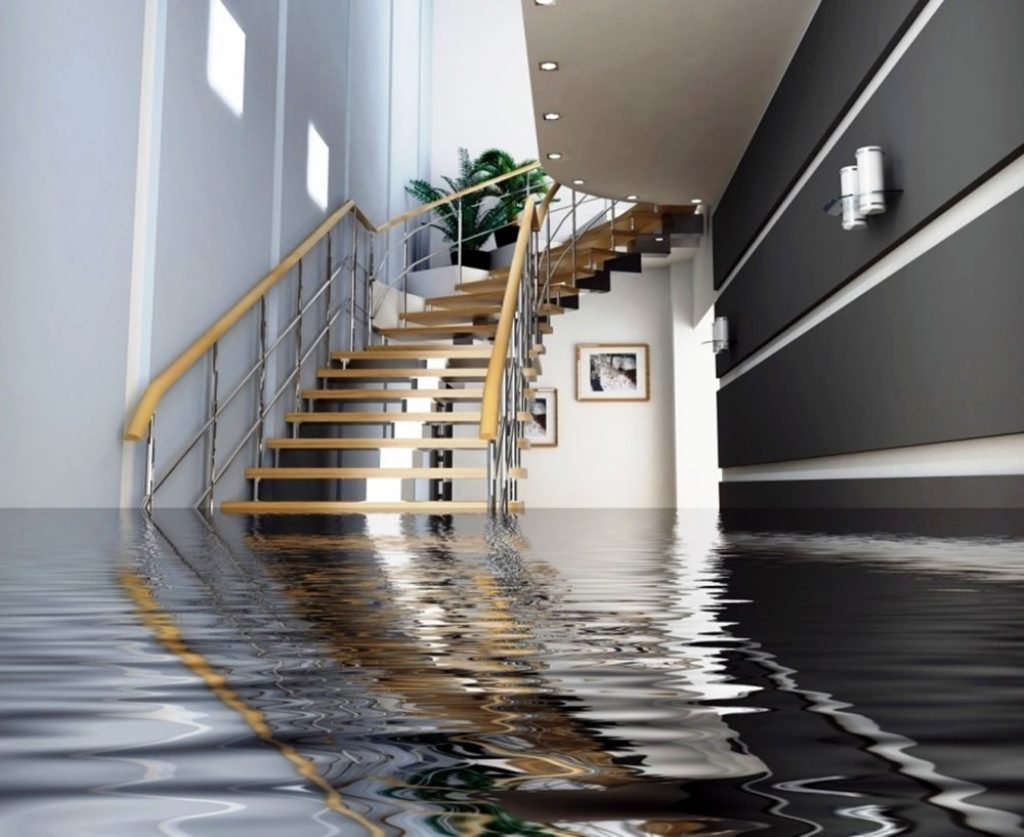Water damage can take many forms, and you need to know what types exist and how to respond since they will require different actions. There are several different classifications used by professionals that can help you in your investigation of water damage in a given home.
Each category will have its unique properties, requiring differing response steps. Understanding these classifications can help you determine the extent of the damage for yourself, saving you time and worry.

Basic Water Damage Classification
Water damage is the most common disaster that homeowners face, and it can occur in any part of your home or business. Understanding the different types of water damage and how to respond is an important first step to dealing with a disaster.
Classifying Water Damage
To deal with water damage effectively, you need to know what kind of water damage you’re dealing with. Water damage can be classified as either external or internal.
- External water damage occurs when rain or snow enters through cracks in your roof or walls, or from overflowing gutters or downspouts.
- Internal water damage occurs when there’s a leaky pipe within your home or business: a broken dishwasher, sink, or toilet; a burst pipe; etc.
Responding to Water Damage
Once you know whether you have external or internal water damage, there are several steps you can take to prevent further damage and start the cleanup process.
First, try to stop any active leaks by turning off your main water valve if it’s an external leak, or if there’s a visible leak in your plumbing system. If that doesn’t work, call a professional plumber or you can check this website https://cleanuprestorationguys.com/ for emergency services that your house needs. Do not think twice about calling for help if needed.
Next, turn off as many electrical appliances as possible so they don’t cause any more damage from electrical shorts or sparks. This is especially important if you have a high-rise building with electricity running through the walls of each apartment—you don’t want to take any chances with fires.
Once the leak has been contained and electricity has been turned off, start removing all affected items from the area where the leak occurred. If any furniture has been damaged or soaked in water, remove it from your home for now—you’ll be able to clean it thoroughly once everything else is dried out. Remove carpeting if it’s soaked as well; this will help prevent mold growth later on down the line if left untreated right away.
Most Common Kinds of Water Damage
Water damage can be devastating to your home or business. It can also be difficult to identify and understand. The most common kinds of water damage are:
Clean Water Damage
This type of damage occurs when there is a loss of clean water from your pipes or plumbing system. When this happens, your carpets and floors are likely to get wet but not necessarily damaged.
However, if you let the water sit for too long, mold may begin to grow in these areas, which will cause permanent damage to your property.
Gray Water Damage
Gray water is created when items such as sinks and tubs overflowing with dirty water that contains soap residue and other contaminants.
Gray water often doesn’t cause any serious damage because it’s usually not acidic like black water. However, it can spread bacteria throughout your home if left unchecked for too long before being cleaned up properly by professionals.
They know how best to handle such situations without causing further harm and damage due to improper cleanup methods being used by untrained individuals who don’t know how to deal with such situations properly themselves.
Black Water Damage
Black water damage is a type of water damage that occurs when sewage or other contaminated water seeps into the walls, carpeting, and other parts of your home. This type of damage can be extremely hazardous to your health and the health of your family.
To protect yourself and your family from black water damage, you must quickly remove any standing water in your home as soon as possible.
Contaminated water poses significant health risks, often associated with severe implications, as seen in events like the Camp Lejeune water contamination lawsuit. Gray water, though not as hazardous as black water, can still harbor bacteria that spread illnesses.
Instances like the Camp Lejeune water contamination lawsuit emphasize the criticality of prompt professional intervention in managing water damage. Timely action not only mitigates health risks but also prevents long-term implications, underscoring the importance of seeking expert assistance to tackle contaminated water incidents.
If there is no standing water, however, then you should still hire a professional mold remediation company to help you remove any mold growth from your home.
Also Read: How to Find Mold and Water Damage Repairs in Nashville
Final Thoughts
With so much information circulating about various types of water damage, it can be difficult to figure out what you need to do.
Having said that, taking the steps outlined above is a good start when it comes to mitigating and undoing the effects of flooding and water damage most generally. On top of these steps, there are other pieces of advice that you can use to return your property to its previous state—whether that means simply having a clean slate or returning to safe living conditions.
Take some time to absorb the available information; then take action on what you know will work best for your particular circumstances.